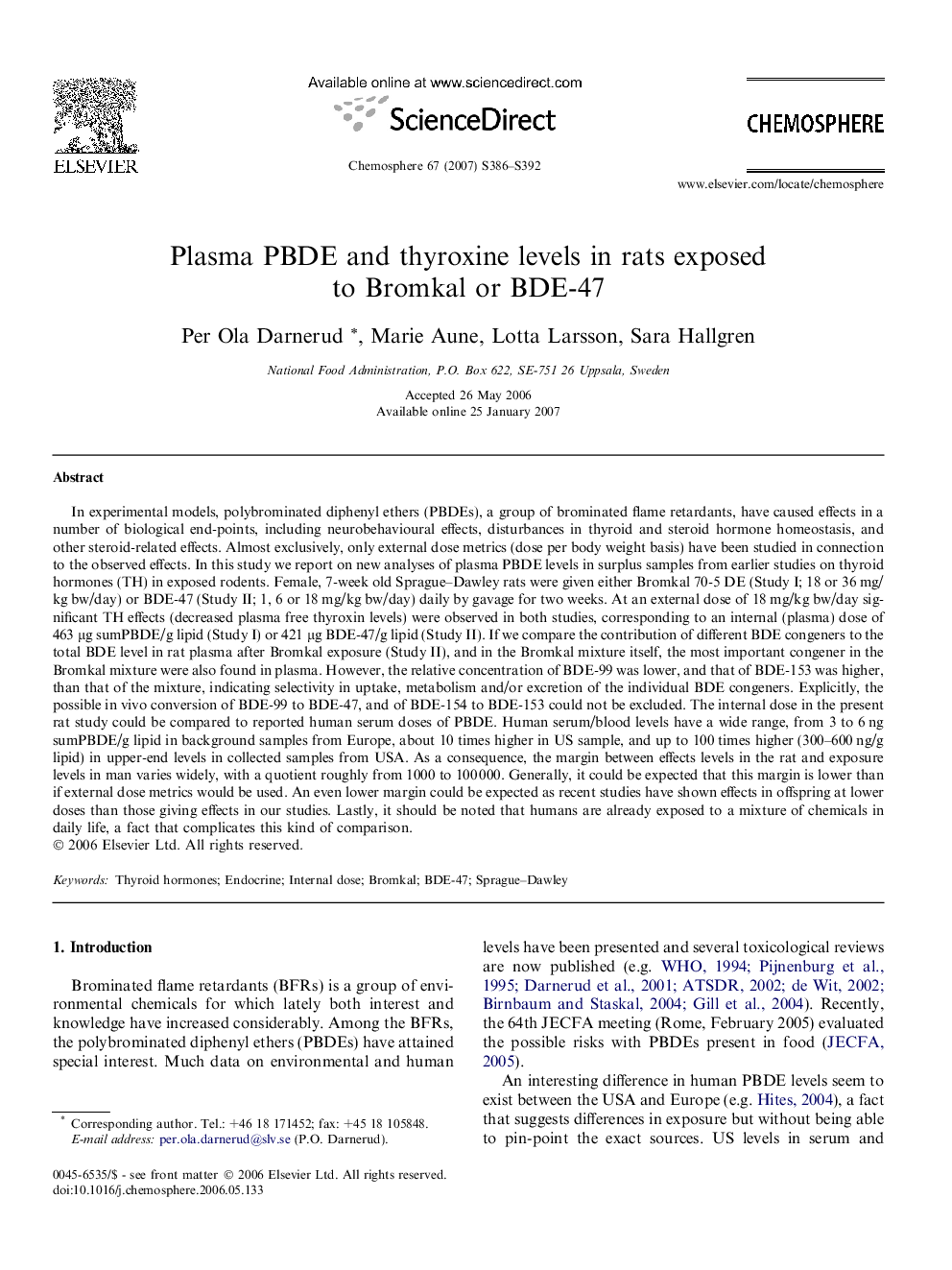| کد مقاله | کد نشریه | سال انتشار | مقاله انگلیسی | نسخه تمام متن |
|---|---|---|---|---|
| 4415165 | 1307737 | 2007 | 7 صفحه PDF | دانلود رایگان |

In experimental models, polybrominated diphenyl ethers (PBDEs), a group of brominated flame retardants, have caused effects in a number of biological end-points, including neurobehavioural effects, disturbances in thyroid and steroid hormone homeostasis, and other steroid-related effects. Almost exclusively, only external dose metrics (dose per body weight basis) have been studied in connection to the observed effects. In this study we report on new analyses of plasma PBDE levels in surplus samples from earlier studies on thyroid hormones (TH) in exposed rodents. Female, 7-week old Sprague–Dawley rats were given either Bromkal 70-5 DE (Study I; 18 or 36 mg/kg bw/day) or BDE-47 (Study II; 1, 6 or 18 mg/kg bw/day) daily by gavage for two weeks. At an external dose of 18 mg/kg bw/day significant TH effects (decreased plasma free thyroxin levels) were observed in both studies, corresponding to an internal (plasma) dose of 463 μg sumPBDE/g lipid (Study I) or 421 μg BDE-47/g lipid (Study II). If we compare the contribution of different BDE congeners to the total BDE level in rat plasma after Bromkal exposure (Study II), and in the Bromkal mixture itself, the most important congener in the Bromkal mixture were also found in plasma. However, the relative concentration of BDE-99 was lower, and that of BDE-153 was higher, than that of the mixture, indicating selectivity in uptake, metabolism and/or excretion of the individual BDE congeners. Explicitly, the possible in vivo conversion of BDE-99 to BDE-47, and of BDE-154 to BDE-153 could not be excluded. The internal dose in the present rat study could be compared to reported human serum doses of PBDE. Human serum/blood levels have a wide range, from 3 to 6 ng sumPBDE/g lipid in background samples from Europe, about 10 times higher in US sample, and up to 100 times higher (300–600 ng/g lipid) in upper-end levels in collected samples from USA. As a consequence, the margin between effects levels in the rat and exposure levels in man varies widely, with a quotient roughly from 1000 to 100 000. Generally, it could be expected that this margin is lower than if external dose metrics would be used. An even lower margin could be expected as recent studies have shown effects in offspring at lower doses than those giving effects in our studies. Lastly, it should be noted that humans are already exposed to a mixture of chemicals in daily life, a fact that complicates this kind of comparison.
Journal: Chemosphere - Volume 67, Issue 9, April 2007, Pages S386–S392